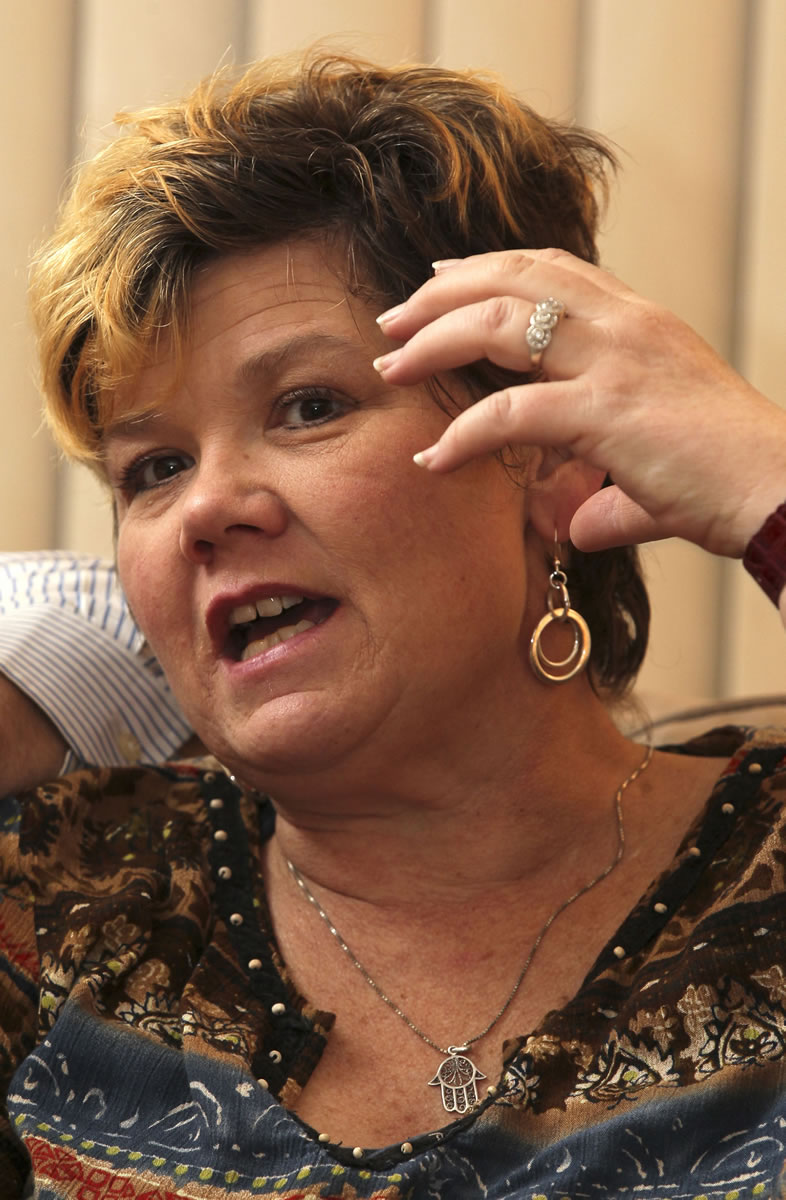AKRON, Ohio — After marking Hanukkah in December, Laura Hood is celebrating what she considers her personal miracle.
Since 2007, Hood had suffered from debilitating seizures that a powerful mix of medications couldn’t control.
Hood, 47, is one of the first people in the nation to get a device implanted in her brain that monitors for signs of seizures and sends impulses directly to the source to quiet the storm.
Before undergoing brain surgery at the Cleveland Clinic in April, Hood had seizure activity as often as five times a day. Now she experiences two or three auras a month that end before a full seizure begins.
“I feel it coming on very faintly, and then it stops,” she said.
The NeuroPace RNS System is a “smart device” that monitors the brain’s activity, interprets the signals and provides stimulation when needed for patients’ intractable seizures.
The NeuroPace RNS is an improvement over other systems that provide stimulation without regard to the individual’s unique brain activity, said Dr. Dileep R. Nair, section head of adult epilepsy at the Cleveland Clinic and an investigator in the trial for the device.
“We teach the device to look for the specific pattern that patient has that’s associated with a seizure,” Nair said. “We try to stop that activity from moving anywhere else.”
More than 2 million Americans have epilepsy, a neurological condition with unpredictable seizures, or sudden surges of electrical activity in the brain, according to the Epilepsy Foundation.
The majority of people can control epilepsy with medications, Nair said. But for about 30 percent of patients, anti-seizure drugs alone aren’t effective.
“In this group, the options really have been to see if they are epilepsy surgery candidates,” he said.
But resecting the portion of the brain where the seizures originate isn’t always possible, particularly if the region is vital for movement or speech or if multiple parts of the brain are involved, Nair said.
For Hood, her seizures began about six months after she and her husband, Michael, got married at the temple where they met. She was a Hebrew teacher and he was a building manager.
While in the hospital after her first seizure, she struggled to remember recent events and important people in her life, even her husband.
“Who is that nice man?” she asked her mother, Elaine Williamson.
Over the next several years, medications failed to control her seizures, including a major episode that caused her to go into cardiac failure.
Every day, she experienced auras, a strange feeling “like a very, very horrific dream you’re having,” she said. “You can feel it coming on your body.”
Epilepsy surgery to remove the portion of her brain where the seizures started wasn’t an option because that region is responsible for her memory.
Hood quit her job in sales, gave up driving and began staying close to home for fear of having a seizure or frightening aura.
“I miss working so much,” she said.
Hood has relied on her husband, mother and longtime family friend Micki Wise of Akron to take her to and from appointments and other places.
When her doctors at the Cleveland Clinic said a new device might help her, she and her family were eager to try it. She became the first patient at the hospital to get the NeuroPace RNS after it earned Food and Drug Administration approval.
“I was glad there was an option,” Hood said.
The NeuroPace RNS can be offered only at advanced epilepsy centers, such as the Cleveland Clinic, that can conduct invasive brain testing in which electrodes temporarily are implanted in the brain to pinpoint seizure activity.
“There’s a whole process that leads up to seeing if a patient is even a candidate,” Nair said.
The neurostimulator costs about $37,000, not including the surgery and necessary pre-testing, according to a NeuroPace spokesperson. Most major insurers, including Medicare, cover the device.
In a clinical study, 55 percent of patients with the NeuroPace RNS System had their seizure frequency reduced by 50 percent or more over a two-year period after getting the device, Nair said.
“We were able to offer something for patients who have a very devastating epilepsy who had no other options,” he said. “This is an example of a new generation of devices.”
Hood’s husband said they’re hopeful her doctors soon can wean her off some of her medicines, which make her groggy all the time.
“It’s a real-life miracle,” Wise said.



